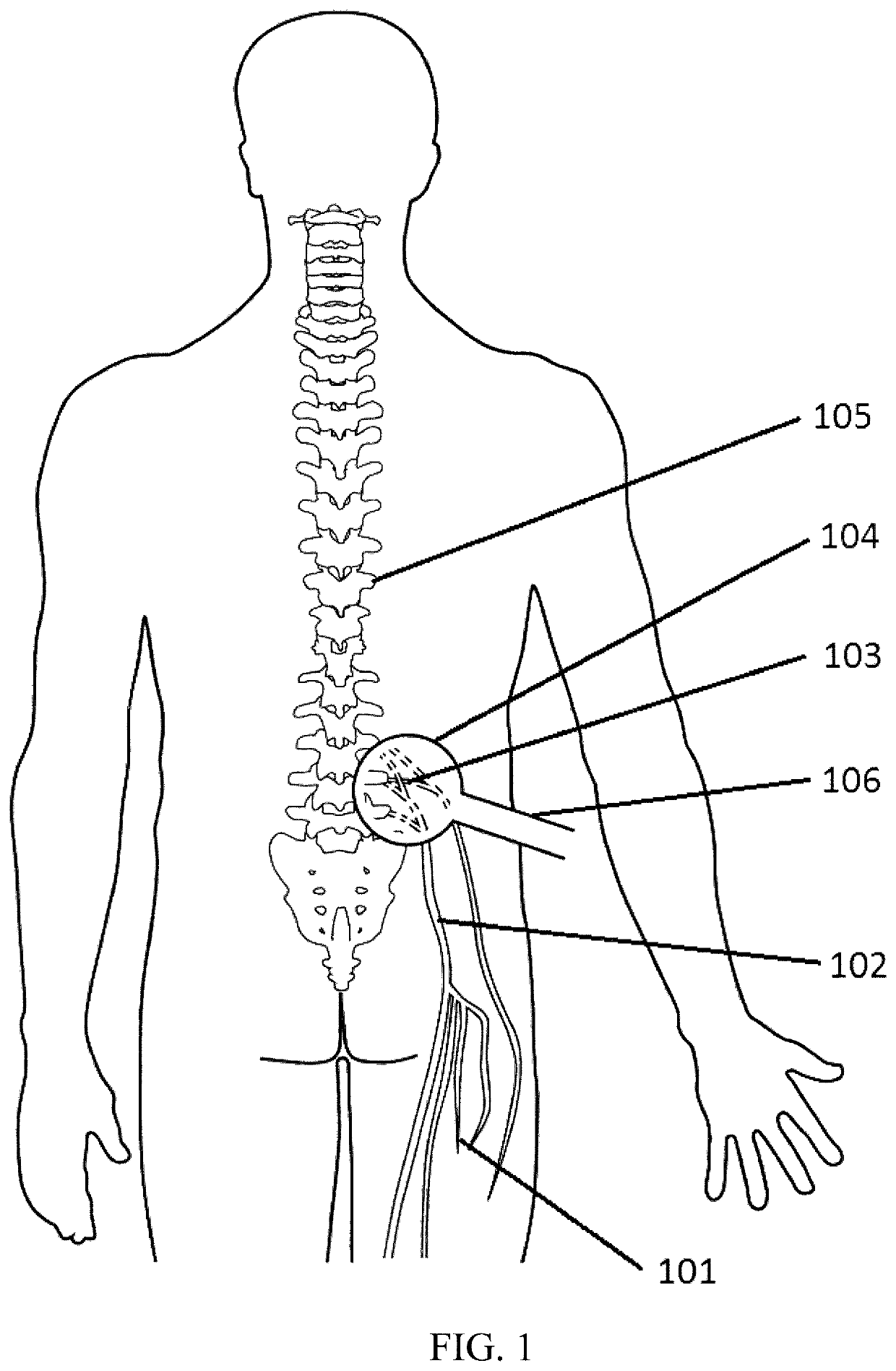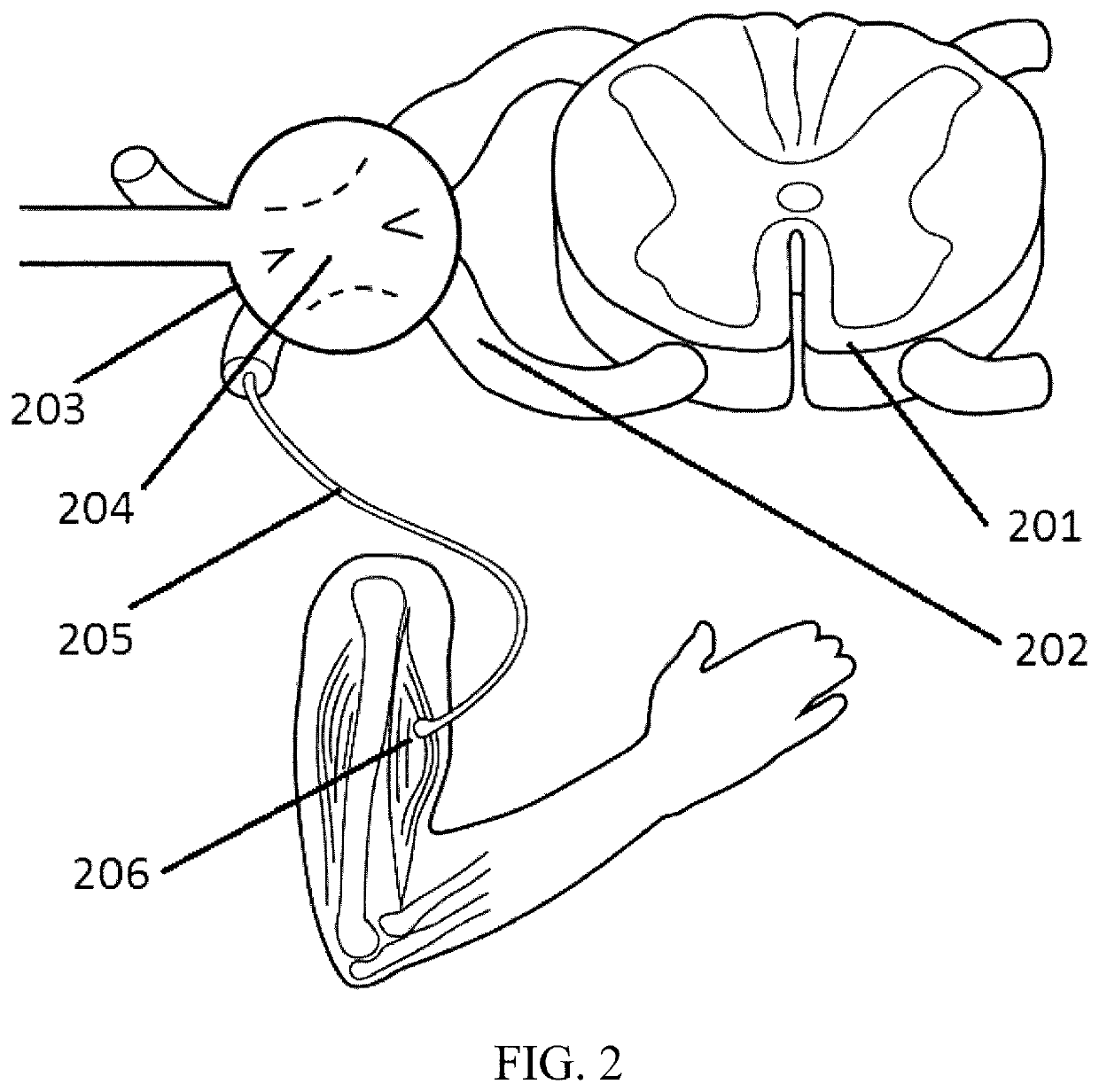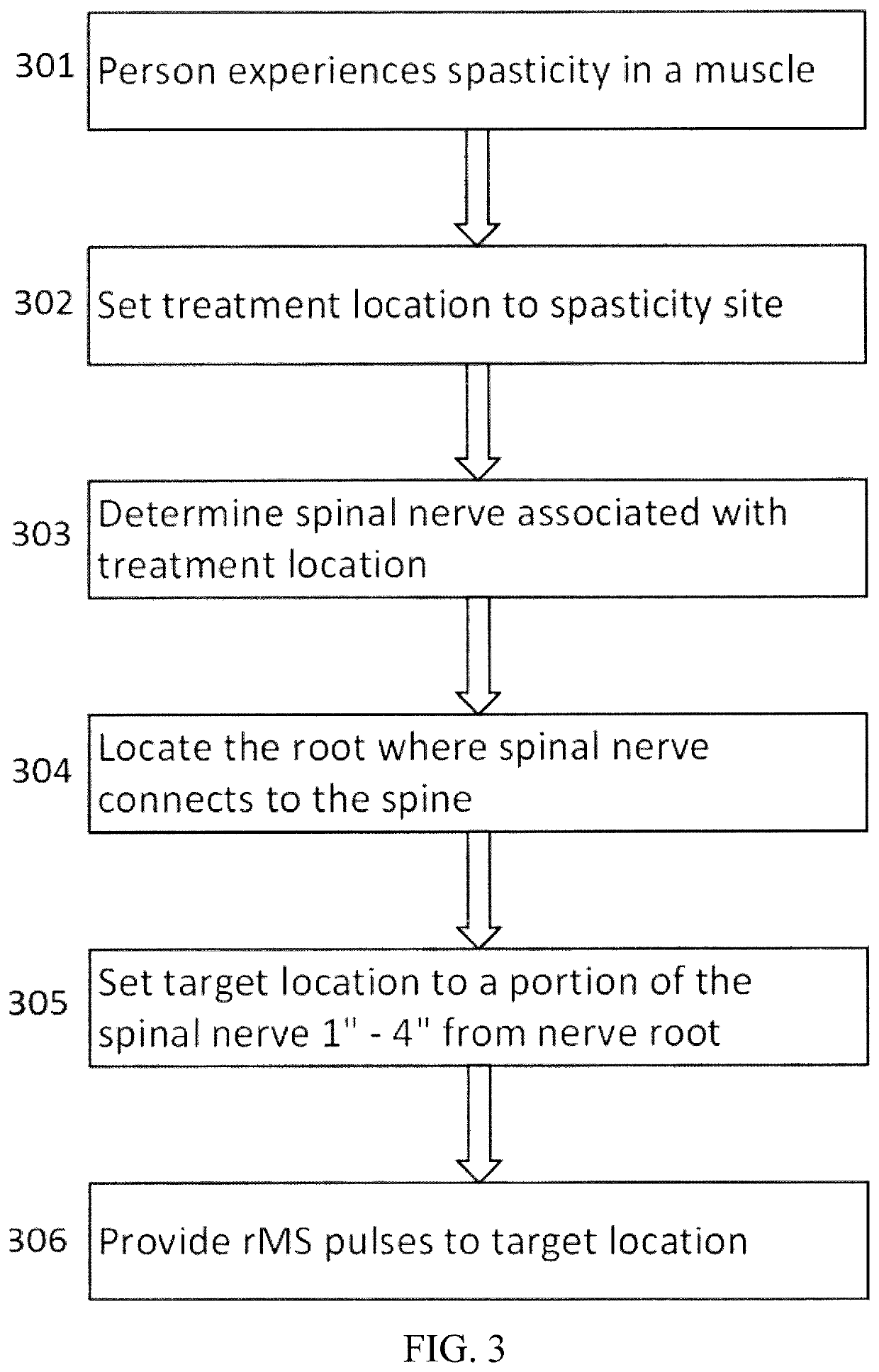Systems and methods for spasticity treatment using spinal nerve magnetic stimulation
a spasticity treatment and spinal nerve technology, applied in magnetotherapy, magnetotherapy using coils/electromagnets, magnetotherapy, etc., can solve the problems of excessive muscle contraction or hyperreflexia, involuntary or jerky movements, severe contractions, etc., to improve spasticity reduction, reduce the subject's anxiety, and increase muscle relaxation
- Summary
- Abstract
- Description
- Claims
- Application Information
AI Technical Summary
Benefits of technology
Problems solved by technology
Method used
Image
Examples
embodiments
[0078]Specific embodiments of the invention include the following:[0079]1. A method of treating spasticity in a subject comprising:[0080]a. determining a treatment location in the body of the subject that is or has been a source of spasticity for the subject;[0081]b. determining a target location on or near at least one spinal nerve that connects the treatment location to the spine ipsilateral to the treatment location; and[0082]c. administering repetitive magnetic field pulses to the target location.[0083]2. The method of Embodiment 1 wherein the magnetic pulse frequency is fixed at or near a target frequency.[0084]3. The method of Embodiment 1 wherein the magnetic pulse frequency hops periodically about an average target frequency.[0085]4. The method of Embodiment 3 wherein the magnetic pulse frequency hops periodically to random values within a range about an average target frequency.[0086]5. The method of Embodiment 3 wherein the magnetic pulse frequency hops periodically in a s...
example 1
[0121]A 33-year-old female suffered a right cerebrovascular accident 3 years prior to treatment. She had complete rigidity in her left arm into the digits. She presented with positive Babinski sign and required assistance to walk. The C4 spinal nerve was identified as connecting the spine to the muscles in her arm. Treatment was administered approximately one inch from the spine ipsilateral to the treatment location. Treatment was also administered to the spinal nerve at the left elbow, rMS was administered alternating between treatment locations at 3000 Gauss pulse intensity, 3 Hz pulse frequency, with a pulse train duration of 200 seconds. Following 1 month of stimulation, she had 40% reduction in arm spasticity and recovery of fine motor movement in her hand.
example 2
[0122]A 42-year-old male experienced intracerebral hemorrhage approximately 14 months prior to magnetic stimulation, resulting in right hemiplegia, loss of sensation, and motor weakness in the right upper and lower extremities and tremor in the right appendages. The C5 spinal nerve was identified as connecting the spine to the muscles of the right appendages. The L4 spinal nerve was identified as connecting the spine to the muscles of the right lower extremities.
[0123]Treatment was administered approximately one inch from the spine ipsilateral to the treatment location, alternating between the two spinal nerves. Treatment was also administered to the C5 spinal nerve at the right elbow, and to the L4 spinal nerve at the knee and calf. rMS was administered alternately between treatment locations at 8,500 Gauss pulse intensity, 3 Hz pulse frequency, with a pulse train duration of 40 seconds and a duty cycle period of 44 seconds.
[0124]Following two weeks of stimulation, tremors in the r...
PUM
 Login to View More
Login to View More Abstract
Description
Claims
Application Information
 Login to View More
Login to View More - R&D
- Intellectual Property
- Life Sciences
- Materials
- Tech Scout
- Unparalleled Data Quality
- Higher Quality Content
- 60% Fewer Hallucinations
Browse by: Latest US Patents, China's latest patents, Technical Efficacy Thesaurus, Application Domain, Technology Topic, Popular Technical Reports.
© 2025 PatSnap. All rights reserved.Legal|Privacy policy|Modern Slavery Act Transparency Statement|Sitemap|About US| Contact US: help@patsnap.com



